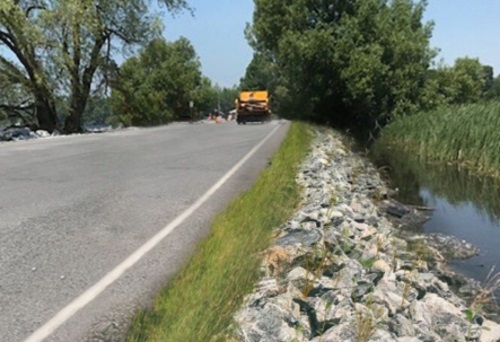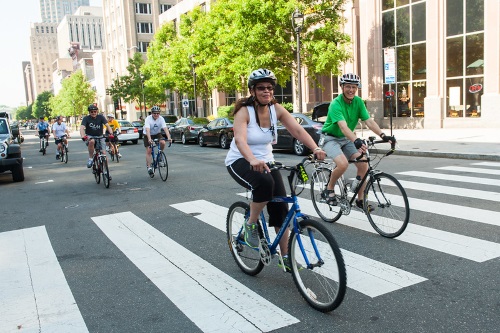FEDERAL ACTION
Joint Letter to Congress Calls for ‘Generational’ Infrastructure Investment – AASHTO Journal
FAST Act reauthorization prospects dim – Transportation Today
Deep Divisions Over Transit Threaten Highway Bill Bipartisanship – Bloomberg Government
American Jobs Plan Targets Resilience, Green Tech, and Remediation to Strengthen Crumbling Infrastructure – National Review
As Biden shifts infrastructure focus to climate and racial justice, cities and states alter pitches for federal money – Washington Post
COVID-19
To Save the New York Subway, Send in the Crowds – Bloomberg Green
What We Learned After Analyzing 5 Months of Active Mobility Responses to COVID-19 – TheCityFix
NEPA
House Republicans introduce bill to reform NEPA – Transportation Today
INFRASTRUCTURE RESILIENCE AND SUSTAINABILITY
Hawaii Department of Transportation begins electrification with Tesla delivery – Honolulu Star-Advertiser
White House issues infrastructure report cards for all 50 states – The Hill
Pritzker Administration Announces $110 Million in Rebuild Illinois Funding for Public Ports Across Illinois – Illinois Department of Transportation (Press release)
Now is Our Opportunity to do Public Transit Differently – Newsweek (Opinion
AIR QUALITY
Bethlehem unveils climate action plan that calls for net-zero carbon emissions by 2040 – Morning Call
Ethanol Groups Defend EPA’s E15 Rule – DTN/Progressive Farmer (Blog)
On Climate Change, DeSantis Focuses On Infrastructure While Ignoring Heat-Causing Emissions – Inside Climate News/WMFE
Chicago Air Quality Ordinance – City of Chicago
Environmental benefits of going solar in Vermont – Vermont Business Magazine (Commentary)
ENVIRONMENTAL JUSTICE
Connections: Discussing racism in American infrastructure – WXXI Radio
Environmental justice is coming to New Jersey’s suburbs – Newark Star-Ledger (Opinion)
NATURAL RESOURCES
Wetlands legislation passes, leaves little protection – KPC News
Federal Water Rule Does Not Account for Pollution Across State Boundaries – University of Texas at Austin (Press release)
HEALTH AND HUMAN ENVIRONMENT/ACTIVE TRANSPORTATION
‘Vision Zero failed my friend’ | Renewed push for safer DC streets after cyclist killed – WUSA-TV
NYC Teams With Bird, Lime, VeoRide For eScooter Pilot Launch – PYMNTS
Why Don’t Transit Agencies Do Bikeshare? – CityLab
Two rural Delaware towns got a new transit and ride-hailing app – StateScoop
TRB RESOURCES/ANNOUNCEMENTS
TRB Webinar: Navigating Environmental Compliance for Public-Private Partnerships – TRB
TRB Webinar: The Day of the Drones – Airports and Unmanned Aircraft Systems, Part 2 – TRB
Driving Down Emissions: Why Reducing How Much We Drive is Critical for Our Climate – Transportation for America (Webinar announcement)
FEDERAL REGISTER NOTICES
Notice of Public Meeting, Utah Resource Advisory Council, Utah – Bureau of Land Management (Notice of public meeting)
2021 Civil Penalties Inflation Adjustments for Oil, Gas, and Sulfur Operations in the Outer Continental Shelf – Bureau of Ocean Energy Management (Final rule)
Drawbridge Operation Regulation; River Rouge, Detroit – Coast Guard (Final rule)
Security Zone: Electric Boat Shipyard, Groton – Coast Guard (Notice of proposed rulemaking)
Regulated Navigation Area; Biscayne Bay Causeway Island Slip, Miami Beach – Coast Guard (Notice of proposed rulemaking)
Drawbridge Operation Regulation; Milwaukee, Menomonee, and Kinnickinnic Rivers and Burnham Canals, Milwaukee, WI – Coast Guard (Notice of proposed rulemaking)
Guidance Document Procedures Rescission – Council on Environmental Quality (Final rule)
National Emission Standards for Hazardous Air Pollutants: Municipal Solid Waste Landfills Residual Risk and Technology Review; Correction – EPA (Proposed rule)
Notice of Intent To Rule on a Request To Release Surplus Property at the Myrtle Beach International Airport, Myrtle Beach, South Carolina – FAA (Notice and request for comment)
Notice of Intent To Release Certain Properties From All Terms, Conditions, Reservations and Restrictions of a Quitclaim Deed Agreement Between the City of Melbourne and the Federal Aviation Administration for the Melbourne International Airport, Melbourne, FL – FAA (Request for public comment)
Endangered and Threatened Wildlife and Plants; Threatened Species Status, Section 4(d) Rule, and Designation of Critical Habitat for Panama City Crayfish – Fish and Wildlife Service (Proposed rule; reopening of comment period and announcement of public hearing)
Central Idaho Resource Advisory Committee – Forest Service (Notice of meeting)
Fiscal Year 2021 Competitive Research Funding Opportunity: Transit Workforce Center (TWC) – FTA (Notice of Funding Opportunity)
Notice of Funding Opportunity for the Maritime Administration’s Port Infrastructure Development Program (PIDP) Under the Consolidated Appropriations Act, 2021 – Maritime Administration (Notice)
Proposed Revisions to the National Handbook of Conservation Practices for the Natural Resources Conservation Service – Natural Resources Conservation Service (Notice of availability; reopening and extension of comment period)
Public Hearing – Susquehanna River Basin Commission (Notice)


